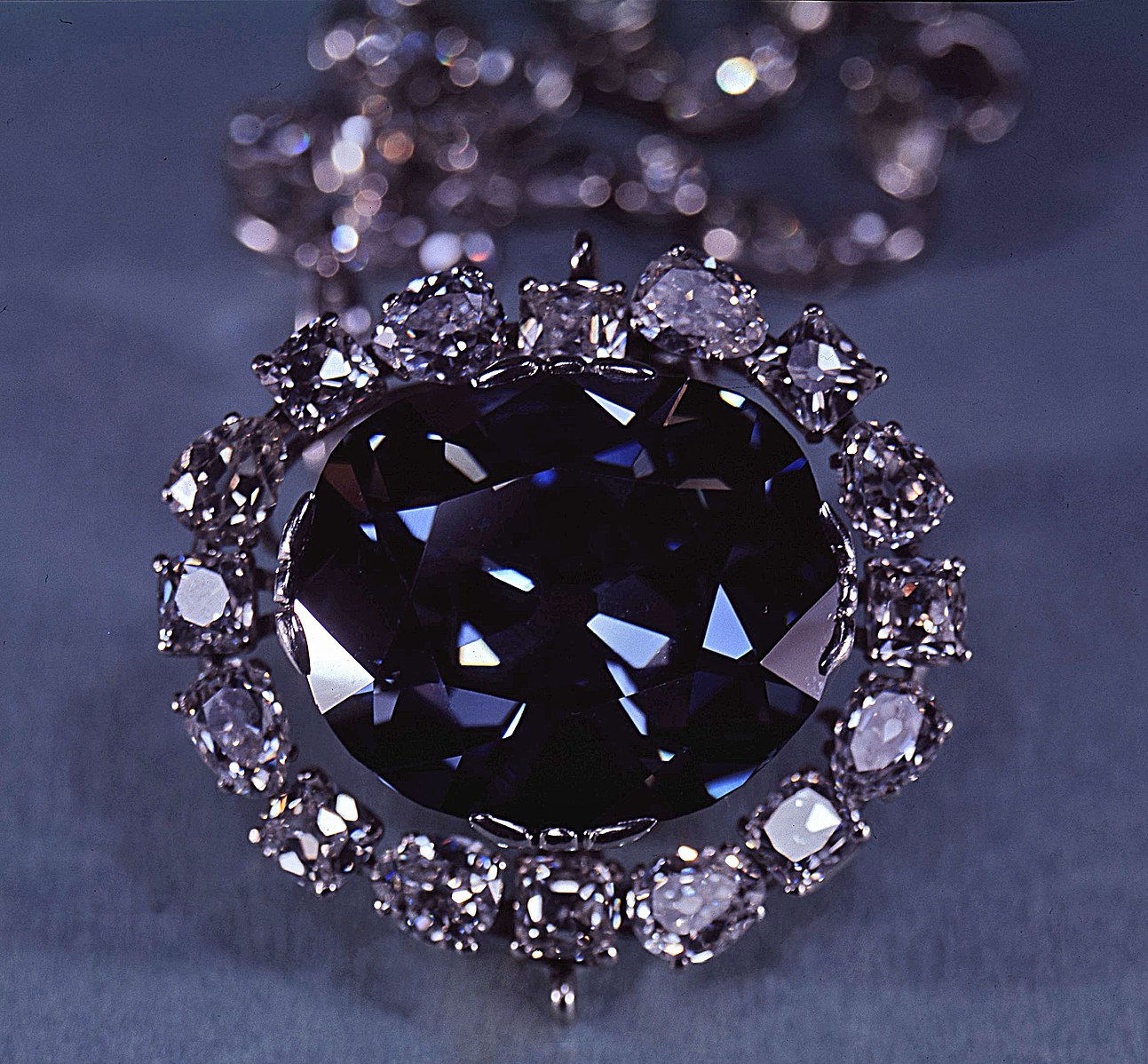Great wealth, beauty, mystery and history have always been a point of fascination to millions around the world, and few items intersect those points in a more spectacular and fascinating fashion than the Hope Diamond. A recent visit to the singular diamond’s permanent home at the Smithsonian brought that reality home in vivid fashion via a short video that we took of the Hope Diamond in its unique display setting.
Something about seeing this historical gem in person and via video makes its unique history come to life in a way that mere photos cannot. The truth of that history is far more intriguing than the legend of its curse, which stands as merely a footnote to the intrigue of kings, queens and treasure hunters that are as numerous as the unique facets of the diamond itself.
An Uncommon History
While the geological history of the Hope Diamond goes back millennia, its recorded history begins when explorer Jean-Baptiste Tavernier met with King Louis XIV to share a collection of diamonds collected on his recently completed trip to India in December of 1668. The rare and large blue diamond weighing 112 3⁄16 old French carats (approximately 115 modern metric carats) was then cut into a 69-carat heart-shaped diamond referred to as “the great violet diamond of His Majesty” most commonly known as the “French Blue.”
Originally set in gold and mounted on a stick, it was stored in the King’s cabinet of curiosities at Versailles, where he could show it to special guests. Louis XIV’s great-grandson, Louis XV, inherited the royal jewels when he ascended to the throne where he made it the centerpiece of an emblem of knighthood of the Order of the Golden Fleece around 1749.
The French Crown Jewels, including the French Blue Diamond in the Order of the Golden Fleece, were turned over to the revolutionary government and moved to the Garde-Meuble, the Royal Storehouse, after the French Revolution where they were put on view for the public once a week until 1792.
The Hope Diamond in the 18th Century
On the night of September 11th, 1792, a group of thieves escaped with some of the jewels with the Order of the Golden Fleece among them. The French Blue resurfaced in London nearly 20 years later, but had been recut to a smaller (though still spectacular) gem, which we know today as the Hope Diamond.
From there, it ended up in the possession of Daniel Eliason, Esq., but by 1823, the diamond was no longer in his possession with some speculating it was now possessed by George IV, the King of England. It resurfaced again in the possession of Henry Philip Hope, a wealthy British banker whose records state its weight at 45.5 carats. The diamond would take his name, becoming known as “Hope’s Diamond” or the “Hope Diamond”.
When Henry Philip Hope died in 1839, it became the possession of his three nephews, eventually landing in the possession of Henry Thomas a decade later who loaned it for display at the Crystal Palace during the Great London Exhibition. Henry Thomas Hope left the Hope Diamond to his wife Anne Adéle Hope when he passed away in 1862. Anne, in turn, decided to leave the family treasures to her grandson, Francis Hope.
Lord Francis Hope lived extravagantly and beyond his means, and to avoid bankruptcy offered the Hope Diamond for sale in 1901 to London diamond merchant Adolf Weil, who sold the diamond to Joseph Frankel’s Sons & Co. of New York shortly thereafter. Frankel brought the Hope Diamond back to New York and after some financial hardships, sold it to Selim Habib, a Turkish diamond collector in 1908. After Habib’s own financial hardships, the diamond was sold at auction in 1909.
The Curse of the Hope Diamond in a New Century
King Louis XVI and Marie Antoinette who owned the diamond were beheaded, but that had everything to do with their rule and the economic turmoil that spurred the French Revolution. Other owners of the Hope Diamond and their families experienced suicides, marriage break-ups, bankruptcy, deaths in car crashes, falls off of cliffs, mental breakdowns, and deaths through drug overdoses.
Despite the mere coincidence, those selective events became a curse due to sensationalizing journalists further fueled by scapegoating owners or a sales angle. The latter two had to do with Hope’s wife May Yohé and then French jeweler Pierre Cartier who used the legend to sell the gem to Evalyn Walsh McLean. It was a tale of intrigue, misfortune and death spun by Cartier claiming that the diamond came with a curse, which was enough to spur the purchase after a two-year effort.
The Hope Diamond in the Modern Era
Evalyn Walsh McLean died from pneumonia on April 26, 1947, and despite her wishes for the gem to be held in trust, estate debts mandated it be sold to pay for them. As a consequence, the Hope Diamond, the Star of the East Diamond, and the rest of her jewelry collection were purchased by jeweler Harry Winston of New York.
In 1958, Harry Winston donated the Hope Diamond to the Smithsonian Institution where it has remained to this day except for a short exchange with the Louvre Museum and a loan to DeBeers and for South Africa’s Rand Easter Show, one of the largest consumer exhibitions in the world. In 1997 The Hope Diamond was put on display in the Harry Winston Gallery of the newly completed Janet Annenberg Hooker Hall of Geology, Gems and Minerals in the National Museum of Natural History.
The diamond is mounted on a rotating pedestal so that it can be viewed from all four sides of the vault, which is where we shot the video accompanying this blog post. With 448 years of history, the Hope Diamond is a tale that is far more intriguing than the fiction of a curse. Both fact and fiction pale in comparison to its timeless beauty that must be seen to be believed.




